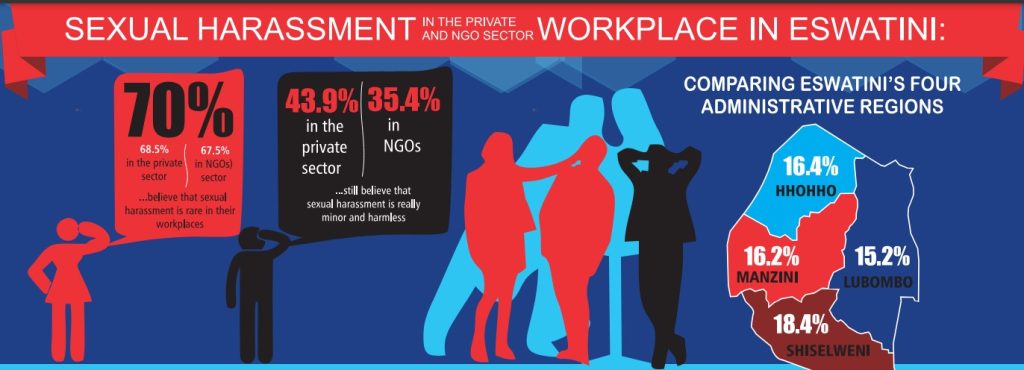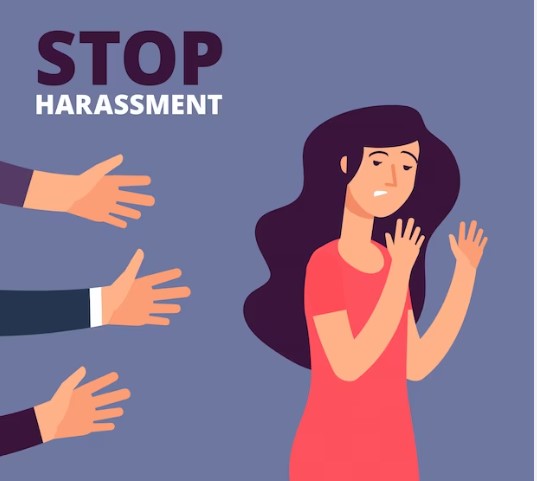
By Thokozani Mazibuko
While most organisations are advocating for equal opportunities for both sexes in the job space, it seems women have had more to deal with on their plate.
The World Health Organization (WHO) in one of its recent reports has said that there are over 23 per cent of women are sexually harassed in their place of work, globally.
A report by WHO has pointed out that women have experienced several forms of violence and harassment at work.
According to WHO, a harasser can be the victim’s supervisor, a supervisor in another area, a co-worker, or someone who is not an employee of the employer, such as a client or customer.
More than one in five people (almost 23 per cent) in employment have experienced violence and harassment at work, whether physical, psychological, or sexual, according to a new joint analysis, the first of its kind, by the International Labour Organization (ILO), Lloyd’s Register Foundation (LRF) and Gallup.
“Experiences of Violence and Harassment at Work: A Global First Survey provides a sense of the extent of the problem and its different forms. It also looks at the factors that may prevent people from talking about their experiences, including shame, guilt, a lack of trust in institutions, or because such unacceptable behaviours are seen as “normal,” reads the report.
ASLO READ:E15 000 bail for having sexual relationship with juvenile (17)
ILO points out that violence and harassment at work are difficult to measure and the report found that only half of victims worldwide had disclosed their experiences to someone else, and often only after they had suffered more than one form of violence and harassment.
It states that the most common reasons given for non-disclosure were “waste of time” and “fear for their reputation.” Women were more likely to share their experiences than men (60.7 per cent compared to 50.1 per cent).
“Globally, 17.9 per cent of employed men and women said they had experienced psychological violence and harassment in their working life, and 8.5 per cent had faced physical violence and harassment, with more men than women experiencing this. Of respondents, 6.3 per cent reported facing sexual violence and harassment, with women being particularly exposed,” states the report.
It states that the groups most likely to be affected by diverse types of violence and harassment include youth, migrant workers, and wage and salaried women and men.
“Young women were twice as likely as young men to have faced sexual violence and harassment, and migrant women were almost twice as likely as non-migrant women to report sexual violence and harassment,” clarifies the report.
The report further highlights that more than three out of five victims said they had experienced violence and harassment at work multiple times, and for the majority, the most recent incident took place within the last five years.
Minister of Labour and Social Security, Phila Buthelezi, in an interview with Eswatini Financial Times (EFT), advised all victims to utilize the Ministry’s labour offices geographically located in the country’s four regions.
“Officers are deployed at the labour offices, and I would like to advise all victims to urgently report any form of harassment at their workplace so that action can be taken promptly,” Minister Buthelezi advised.
ESWATINI’S STUDY BY ILO
In defining sexual harassment, the current standing International Labour Organization (ILO) definition is that sexual harassment is a sex-based discrimination that constitutes physical, verbal or non-verbal sexual behaviour that is unwelcome to the recipient.
The recipient is the barometer in defining/classifying behaviour that is sexually harassing to him/her and hence the
emphasis on the unwelcome aspect of the behaviour as deemed by the recipient.
If it is not overt physical sexual advances and sexually inclined remarks and gestures, the study found that employees tend to ignore, pardon, or dismiss all other behaviour as not constituting sexual harassment.

A major contributing factor to the complexity of defining and understanding sexual harassment is that people take offence to different behaviours in varying capacities.
For example, the study found that about 70% (68.5% in the private sector and 67.5% in NGOs) of employees believe that sexual harassment is rare in their workplaces.
Even in cases that employees experience or see what could constitute as sexual harassing behaviour, a significant 43.9% in the private sector and 35.4% in NGOs still believe that sexual harassment is minor and harmless.
PREVALENCE AND NATURE OF SEXUAL HARASSMENT
In terms of who is more likely to experience sexual harassment, the study found that women are at greater risk compared to males. A total of 19.6% of females compared to 13.8% of males indicate to have experienced sexual harassment in the workplace.
Most common cases involve employees between the ages 20 and 50 with the age groups 40-44 years (23.8%), and 30-34 years (19.9%) experiencing disproportionately higher number of sexual harassment encounters.

With regards to employee marital status, the study also reveals that divorced (33.3%), cohabiting (20.0%) and single (17.5%) employees are more likely to be targeted while widowed employees (5.9%) are less likely to experience it than all employees.
Volunteers (21.1%), part-time employed (6.8%) and casual (5.6%) employees face a greater risk given that a comparable but lower proportion (17.3%) of permanently employed employees confirm to have experienced sexual harassment.
The study found that sexual harassment is most prevalent in the Shiselweni region at 18.4%, followed by Hhohho at 16.4% and Manzini at 16.2% while the Lubombo region trails behind at 15.2%.
Verbal or sexually inclined compliment (19.18%); physical conduct of a sexual nature (15.92%); unwelcome sexual advances (15.51%); and requests for sexual favours (11.84%).
Other sexual harassment behaviour in the workplace in the country includes verbal intimidation of employees (6.94%), abuse of power (6.53%), bullying (5.31%), financial harassment (3.27%), and display of indecent and obscene pictures at 3.27%.
PERPETRATORS AND VICTIMS (SURVIVORS)
Sexual harassment in Eswatini affects both males and females and happens including both opposite and same-sex harassment. That is 70% of the incidences in the private sector, males between the ages 41-60 were the perpetrators of females.
These males are usually middle managers and Directors in their respective companies.
In the NGO sector, female survivors are harassed by similar males but in much higher positions of the organisations such as CEOs and Directors. For male survivors, in 9 out of 10 cases, the perpetrator will be a female in the private sector compared to 8 out of 10 cases where it’s a female in the NGO sector.
Females that sexually harass males in the private sector are much younger – falling between the ages 19-30 years and are usually junior managers, in addition to some older females around 60 years who are the deputy CEOS and some CEOS in their companies.
In the NGO sector, the females harassing males are also young (25-40) often the junior managers in their respective organizations’.
Males that sexually harass other males are mostly prevalent in the private sector, accounting for about 30% of the sexual harassment cases reported in this sector compared to 9.1% in NGOs.
DRIVERS OF WORKPLACE SEXUAL HARASSMENT
The study found that three major factors drive sexual harassment in the workplace: (1) employees in positions of power violating other employees’ rights through sex-based discrimination;
(2) lack of knowledge on what constitutes sexual harassment such that some employees unknowingly harass others while those who receive the harassment ignore or pardon the inappropriate behaviour, and (3) sexual harassment occurs due to the competition between employees for the limited career opportunities that are available in each company or organization.
The study found that the effects of harassment can be equally damaging to both
sexes. So, when a person is sexually harassed, they feel humiliated degraded and threatened, which escalates to extreme stress, depression, and nervousness.
Organizations and companies suffer because the employees lose trust in the work
environment and people they work with, employees become demotivated which may lead to increased absenteeism, reduced productivity, and reduced job effectiveness and satisfaction.
Demotivated employees impose penalties on the whole country because companies and organizations become less effective in the production of goods and services thus reducing the country’s gross domestic product (GDP).




